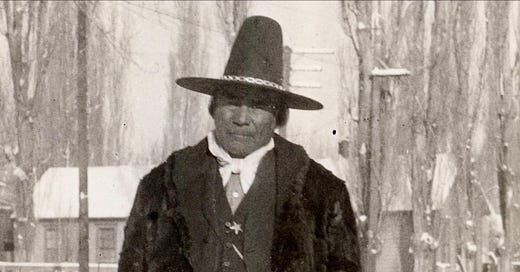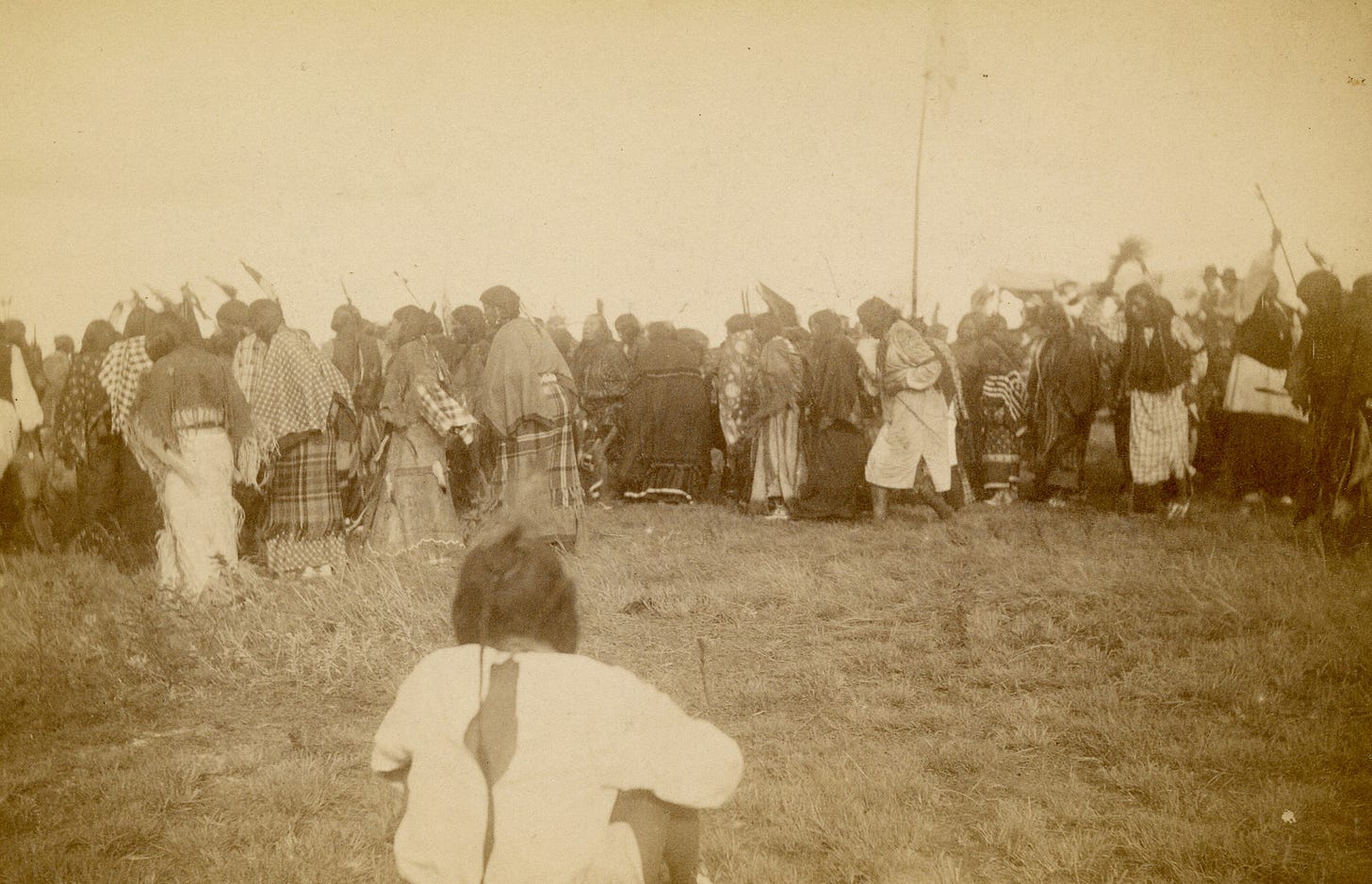The Prophet, the Ghost Dance... and the Wounded Knee Massacre
'Quintus Hopper of Nevada' series: The American Indian prophet Wovoka wanted nothing but peace. But his movement frightened white man, and inadvertently led to the Wounded Knee Massacre.
Quintus Hopper of Nevada, published in January 2022, is a historical novel that follows the epic and peculiar life of a frontier newspaper typesetter. As part of my research I made extensive use of newspaper archives and, in this series, I’ll share some of my often surprising findings. Here are history, commentaries and contemporary newspaper articles as they relate to my latest novel. This time a look at Wovoka, a Northern Paiute prophet described by ethnographer James Mooney as on par with Jesus and the Buddha. Wovoka’s visions gave tribes new hope for a life of peace and plenty for all - and eventually lit the fuse that caused the horrific Wounded Knee Massacre.
In the late 1880s, the hugely consequential ‘Ghost Dance’ movement was born. A Northern Paiute Indian by the name of Wovoka told of his visions. He had been taken to the Great Spirit, who had shown him a future of peace, and what the people needed to do to make it reality.

Messengers from many tribes came to visit the prophet, and they carried his messages back to their people. Soon, from the mountains and across the plains, tribes were dancing the prescribed five-day dance ritual. The prophet’s vision was offering the tribes hope and the way to that envisioned future was achieved by dancing, by not fighting, by harming no one.
James Mooney, known as the ‘Indian Man’ at the Bureau of American Ethnology in Washington, investigated the Ghost Dance religion before and after Wounded Knee. He spoke with Wovoka, and confirmed to the government that the prophet’s new religion was one of peace, a religion proclaiming that the time would come when their whole race, the living and the dead, would be reunited upon a regenerated earth, to live a life of aboriginal happiness, forever free from death, disease and misery. In his findings, Mooney concluded that Wovoka had given the tribes a better religion than they had ever had before. He argued that this religion of peace was in the best interests of white neighbors and that its moral code was as pure and comprehensive in its simplicity as anything found in religious systems from the days of Gautama Buddha to the time of Jesus Christ.
The converging of increasing crowds of natives, performing ceremonies, dancing in circles for days on end, was looked at with great concern by white men. They saw in those ceremonies the potential preparation for an uprising. The Ghost Dance movement had reached the Standing Rock reservation and rattled the Indian Agent in charge. He ordered to have Sitting Bull arrested – and in the ensuring commotion the famed American Indian leader was shot and killed.
Following the death of Sitting Bull, a group over three hundred men, women and children, led by Chief Spotted Elk, left the reservation for what they hoped would be a safer place, the Pine Ridge reservation. A military might, five hundred strong, pinned the native people down at a creek called Wounded Knee, holding them at gunpoint. They were dancing, as the prophet had told them to. They were peaceful, they were harming no one.
But on the morning of December 29, 1890, the men of the U.S. Cavalry went into the Lakota camp to disarm what they saw as a large number of hostiles. There is no certainty as to what began the slaughter at Wounded Knee on that day. What is certain, however, is that no violence had been sought by the native people, and that, when the guns and cannons rested, more than two hundred and fifty men, women and children lay dead.

In the novel, Quintus lives in Hawthorne at Walker Lake for a time, there working for the Walker Lake Bulletin. He knows Wovoka and meets him during one of his trances. It is a meeting that takes place four years after the massacre at Wounded Knee. The knowledge of the massacre, and its connection to the Ghost Dance movement, weighed heavily on the prophet’s heart. Even though he was often derided by non-believers, and by those who envied him his special status, Wovoka remained true to himself. Below article shows that Wovoka remained active – and that other tribal leaders called him a liar and worried that young ones might be attracted by Wovoka’s prophesies.
August 8, 1894
Walker Lake Bulletin, Hawthorne
End of the World.
The Piute Indian prophet of Walker Lake who caused such a furor among his people several years ago by announcing to the coming of the Indian Messiah and originating the ghost dance, is at his old business again with new tricks. He announces the end of the world to take place soon by a mighty rush of waters that will tear down the mountains and make a plain on the earth. Every living thing will be destroyed and a white grass will be left growing when the waters subside to basins created for them. Countless antelope, deer, buffalo and other game will delight the Red man, will grow fat and fast upon the white grass and then only the Indians will return to enjoy the hunting grounds and monopolize the earth.
Capt. Dave Numana, Sam, Johnson Sides and the other wise men call the prophet a liar and his tongue forked and powwows will be held at prominent points in the State to speak the true word to the guileless buck and keep him in the narrow path.











